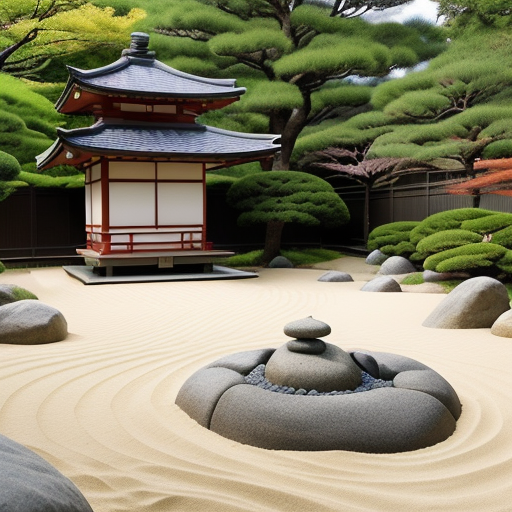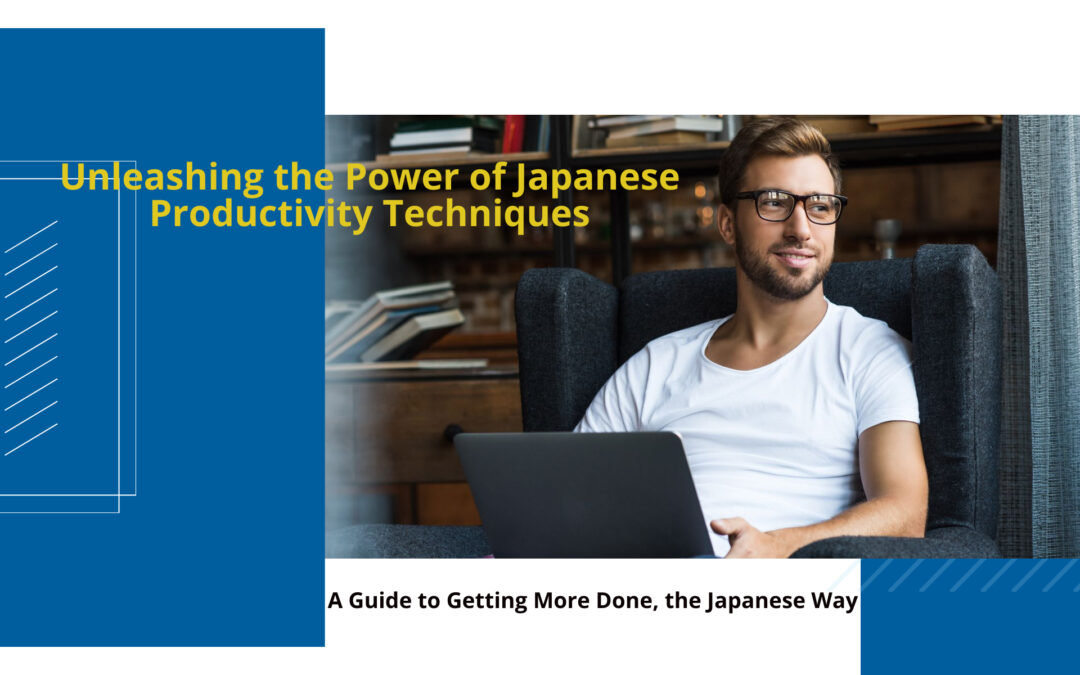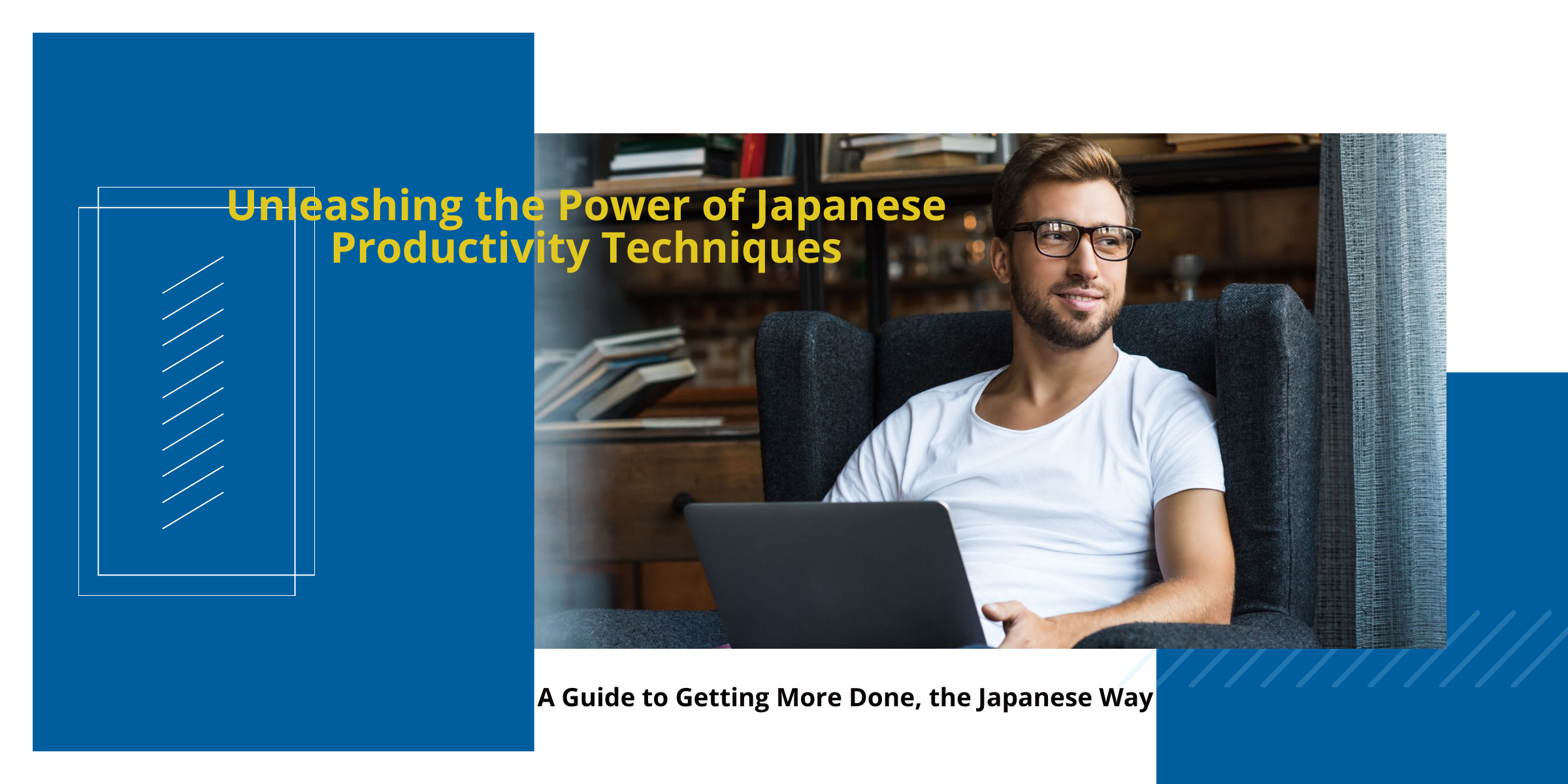TL;DR: Dive into the world of Japanese productivity and discover transformative techniques that have revolutionized how we work. From the continuous improvement mindset of Kaizen to the visual magic of Kanban, this guide will help you elevate your game, overcome that pesky laziness, and supercharge your productivity.
Introduction: Beyond the Hustle – Embracing the Japanese Art of Productivity
In a world obsessed with the hustle, where “busy” has become a badge of honor, it’s time to pause and rethink. What if there was a way to work smarter, not just harder? Enter the realm of Japanese productivity. A world where efficiency meets mindfulness, and where tasks become a dance of purpose and passion. Following is a shortlist of our favorite productivity advice, a productivity 101 of Japanese methods to overcome laziness, getting your time management right, improving efficiency. The improvements will partly be visible in your life immediately, but a lot will be improvements over time, through “continuous improvement”.

1. Kaizen: More Than Just a Buzzword, It’s a Lifestyle of Continuous Improvement
In the fast-paced world of productivity hacks and quick fixes, Kaizen stands out as a beacon of sustainable growth. But what exactly is Kaizen? Derived from two Japanese words, ‘Kai’ meaning ‘change’ and ‘Zen’ meaning ‘good’, Kaizen translates to “good change.” But it’s so much more than that.
The Philosophy Behind Kaizen
At its core, Kaizen is a philosophy, a way of life that champions continuous, incremental improvement. It challenges the status quo, urging individuals and businesses alike to ask the pivotal question: “How can I make this better?” It’s not about grand, sweeping changes that disrupt and often falter. Instead, Kaizen focuses on the small, consistent improvements that compound over time, leading to transformative results in Japanese businesses and others.
Kaizen in the Workplace
Introduced to the world by Japanese companies like Toyota in the 1940s, Kaizen has since become a cornerstone of business practices worldwide. In the workplaces that apply Kaizen, it manifests as regular brainstorming sessions, where team members come together to identify inefficiencies and brainstorm solutions. It’s about fostering a culture where feedback is welcomed, and every team member, regardless of their position, feels empowered to suggest improvements.
The Power of Incremental Changes
Imagine improving just 1% every day. It might not seem like much, but over a year, these small continual increments compound, leading to a 37x improvement! That’s the magic of Kaizen. Instead of aiming for the moon and often missing, Kaizen encourages us to take small, sure steps that guarantee progress.
Kaizen in Everyday Life
But Kaizen isn’t restricted to businesses. It’s a mindset that’s cross-functional, and can be integrated into our daily lives. Whether it’s improving your morning routine, tweaking your workout regimen, or refining a personal project, the principles of Kaizen can be applied universally. It’s about being mindful, recognizing areas of improvement in our habits, behaviors, and routines, and making the necessary adjustments.
Conclusion
In a world that often seeks instant gratification, Kaizen is a breath of fresh air. It reminds us that true growth isn’t always about the leaps and bounds but about the consistent, incremental steps we take every day. Embracing Kaizen is not just about being more productive; it’s about leading a more purposeful, intentional life.

2. Kanban: Visual Mastery at Its Finest
In an era where information overload is the norm, the need for clear, visual organization has never been more paramount. Enter Kanban, a productivity method that turns the abstract into the tangible, making workflow management a visual treat.
The Origins of Kanban
Kanban, which translates to “billboard” or “signboard” in Japanese, has its roots in the Toyota Production System of the 1940s. Taiichi Ohno, an industrial engineer at Toyota, developed this system to improve manufacturing efficiency. He drew inspiration from supermarkets, observing how shelves were restocked only when they were empty. This “just-in-time” approach was the genesis of Kanban.
The Anatomy of a Kanban Board
At its simplest, a Kanban board consists of three columns: “To Do,” “In Progress,” and “Done.” Tasks, represented by cards or sticky notes, move from one column to the next, providing a clear visual representation of workflow status. But modern Kanban boards, especially digital ones like Trello and Jira, can be customized with additional columns and labels to suit many important specific project needs.
Why Visual?
Humans are inherently visual creatures. We process visual information faster than text, and our memory retention for visual content is higher. Kanban taps into this strength, transforming to-do lists and project plans into visual stories. By seeing tasks move across the board, team members gain a sense of accomplishment and can quickly identify bottlenecks or areas that need attention.
Kanban Beyond Work
While Kanban has its origins in manufacturing and is widely used in software development, its principles are universal, and anyone can implement Kanban. From planning a wedding to organizing household chores, Kanban can bring clarity and efficiency to any project. All you need is a whiteboard, some sticky notes, and a desire to visualize your tasks.
The Power of Limitation
One of the key principles of Kanban is setting a limit on the number of tasks in the “In Progress” column. This ensures that team members aren’t overwhelmed and can focus on completing tasks before taking on new ones. It’s a powerful reminder in our multitasking world that sometimes, less truly is more.
Conclusion
Kanban is more than just a productivity technique; it’s a testament to the power of visualization. In a world brimming with tasks and distractions, Kanban offers a sanctuary of clarity. It’s not just about getting things done; it’s about understanding the journey, visualizing the process, and celebrating each milestone along the way. Kanban is a simple yet effective tool to get things done, and reduce procrastination.

3. Ikigai: The Secret Sauce to Purposeful Productivity
In the vast landscape of productivity methodologies, Ikigai stands out, not as a tool or technique, but as a profound philosophy. It’s a concept that goes beyond mere task completion, delving into the very essence of purpose and passion.
Understanding Ikigai
Ikigai, a Japanese term, is often translated as “a reason for being.” It represents the intersection of four primary elements:
- What you love (Passion)
- What the world needs (Mission)
- What you are good at (Vocation)
- What you can be paid for (Profession)
At the heart of Ikigai lies a central question: Why do you get up in the morning? It’s about finding joy, fulfillment, and balance in the daily routine of life.
The Ikigai Diagram: A Compass to Purpose
Visualize Ikigai as a Venn diagram where these four elements intersect. At each intersection, there’s a state:
- Passion and Mission intersect at “Delight and fullness, without wealth.”
- Passion and Vocation intersect at “Excitement and complacency, without wealth.”
- Vocation and Profession intersect at “Comfortable, but feeling of emptiness.”
- Mission and Profession intersect at “Satisfaction, but feeling of uselessness.”
True Ikigai lies at the center, where all these elements harmoniously intersect.
Ikigai in the Modern World
In today’s hustle culture, it’s easy to equate busyness with productivity and purpose. But Ikigai challenges this notion. It’s not about how much you do, but why you do it. Whether you’re an artist, an engineer, a teacher, or an entrepreneur, Ikigai can guide you in aligning your profession with your passion, ensuring that every task, no matter how mundane, has purpose and meaning.
Finding Your Ikigai
Discovering one’s Ikigai is a deeply personal journey. It requires introspection, self-awareness, and often, a bit of trial and error. Start by asking yourself:
- What activities make time fly for me?
- Which tasks feel less like work and more like play?
- How can I align my daily tasks with my larger life goals?
Remember, your Ikigai might evolve over time, and that’s okay. It’s a continuous journey of self-discovery and alignment.
Conclusion
Ikigai is not just a productivity hack; it’s a way of life. It’s about finding balance, joy, and purpose in the chaos of daily life, looking for ways to . In a world obsessed with outcomes, Ikigai reminds us to cherish the process. It’s the secret sauce to not just getting things done, but finding fulfillment in the journey.

4. Mottainai: The Art of Waste Reduction and Mindful Productivity
In the heart of Japanese culture lies a deep respect for resources, encapsulated in the term “Mottainai.” While not a productivity technique in the traditional sense, Mottainai embodies a philosophy of waste reduction, resourcefulness, and mindfulness that can profoundly impact how we approach tasks and challenges.
Understanding Mottainai
Mottainai is a term that conveys a sense of regret over waste. It’s a reminder to recognize the value in each object or resource and to use it to its fullest potential. The concept extends beyond physical items to time, opportunities, and even talents.
The Four Rs of Mottainai
Mottainai encompasses four primary principles, often referred to as the Four Rs:
- Reduce: Minimize waste and excess in all forms.
- Reuse: Before discarding, consider if an item can serve another purpose.
- Recycle: Transform waste into something new and useful.
- Respect: Cultivate a deep appreciation for resources, understanding their value and significance.
Mottainai in Productivity
How does a philosophy about waste relate to productivity? The connection lies in the approach. By adopting a Mottainai mindset:
- We become more mindful of how we spend our time, ensuring each moment is used purposefully.
- We prioritize tasks more effectively, reducing the “waste” of working on non-essential activities.
- We cultivate a sense of gratitude for the opportunities and resources available to us, boosting morale and motivation.
- We foster a culture of continuous learning, viewing mistakes not as failures but as valuable lessons.
Embracing Mottainai in the Modern World
While Mottainai has its roots in ancient Japanese culture, its principles are timeless. In today’s fast-paced, consumer-driven world, Mottainai serves as a gentle reminder to slow down, be mindful, and cherish the resources at our disposal. Whether it’s decluttering our workspace, optimizing our daily routines, or simply taking a moment to reflect and appreciate, Mottainai can guide us towards a more purposeful and productive life.
Conclusion
Mottainai is not just a term; it’s a way of life. It challenges us to look beyond the hustle and bustle, to find value in every moment, and to approach tasks with a sense of purpose and gratitude. In embracing Mottainai, we don’t just enhance our productivity; we enrich our very souls.

4. 5S: The Pillars of Japanese Workplace Efficiency
In the intricate tapestry of Japanese productivity methodologies, 5S emerges as a foundational framework, especially in the realm of workplace organization and efficiency. Rooted in manufacturing but applicable in various settings, 5S is a systematic approach to creating and maintaining an organized, clean, and high-performing workspace.
Understanding the Five S’s
The 5S methodology is built upon five Japanese terms, each starting with the letter ‘S’:
- Seiri (Sort): Eliminate unnecessary items from the workplace. Keep only what’s essential.
- Seiton (Set in order): Organize and arrange tools and equipment in a manner that promotes smooth workflow. Everything should have a designated place.
- Seiso (Shine): Regularly clean and maintain the workspace. A clean environment often leads to clearer thinking.
- Seiketsu (Standardize): Establish standards for the first three S’s. Ensure consistency in processes and practices.
- Shitsuke (Sustain): Maintain and review the standards. This is about fostering discipline and commitment to the 5S principles.
5S Beyond Manufacturing
While 5S originated in Japanese manufacturing units, especially in companies like Toyota, its principles are universal. Whether it’s an office setting, a digital workspace, or even our homes, the principles of 5S can bring clarity, efficiency, and effectiveness.
The Benefits of Embracing 5S
- Enhanced Productivity: With everything in its designated place, time isn’t wasted searching for tools or documents.
- Improved Safety: A clutter-free environment reduces the chances of accidents.
- Boosted Morale: A clean and organized workspace can uplift spirits and improve focus.
- Waste Reduction: By identifying and eliminating unnecessary items, resources are used more efficiently.
Finding Your 5S Rhythm
Implementing 5S is not a one-time event but a continuous journey of improvement. It requires commitment from all team members and regular audits to ensure adherence. Digital tools, like Kanban boards or apps like Trello, can be used to track and manage the 5S process, ensuring that the principles are integrated seamlessly into daily routines.
Conclusion
5S is more than just a productivity technique; it’s a philosophy that champions order, discipline, and continuous improvement. In a world where chaos can quickly ensue, 5S stands as a beacon of structure and efficiency.
Photo Idea: A before-and-after image of a workspace. The ‘before’ showing a cluttered desk, and the ‘after’ showcasing a well-organized, clean, and efficient workspace embodying the principles of 5S.

Conclusion: The Japanese Renaissance of Productivity Techniques
The Japanese have a knack for turning simple concepts into transformative methodologies. Their approach to productivity isn’t just about getting things done; it’s about doing the right things, in the right way, for the right reasons. So, gear up, integrate these gems into your life, and embark on a journey of continuous improvement, Japanese style.



